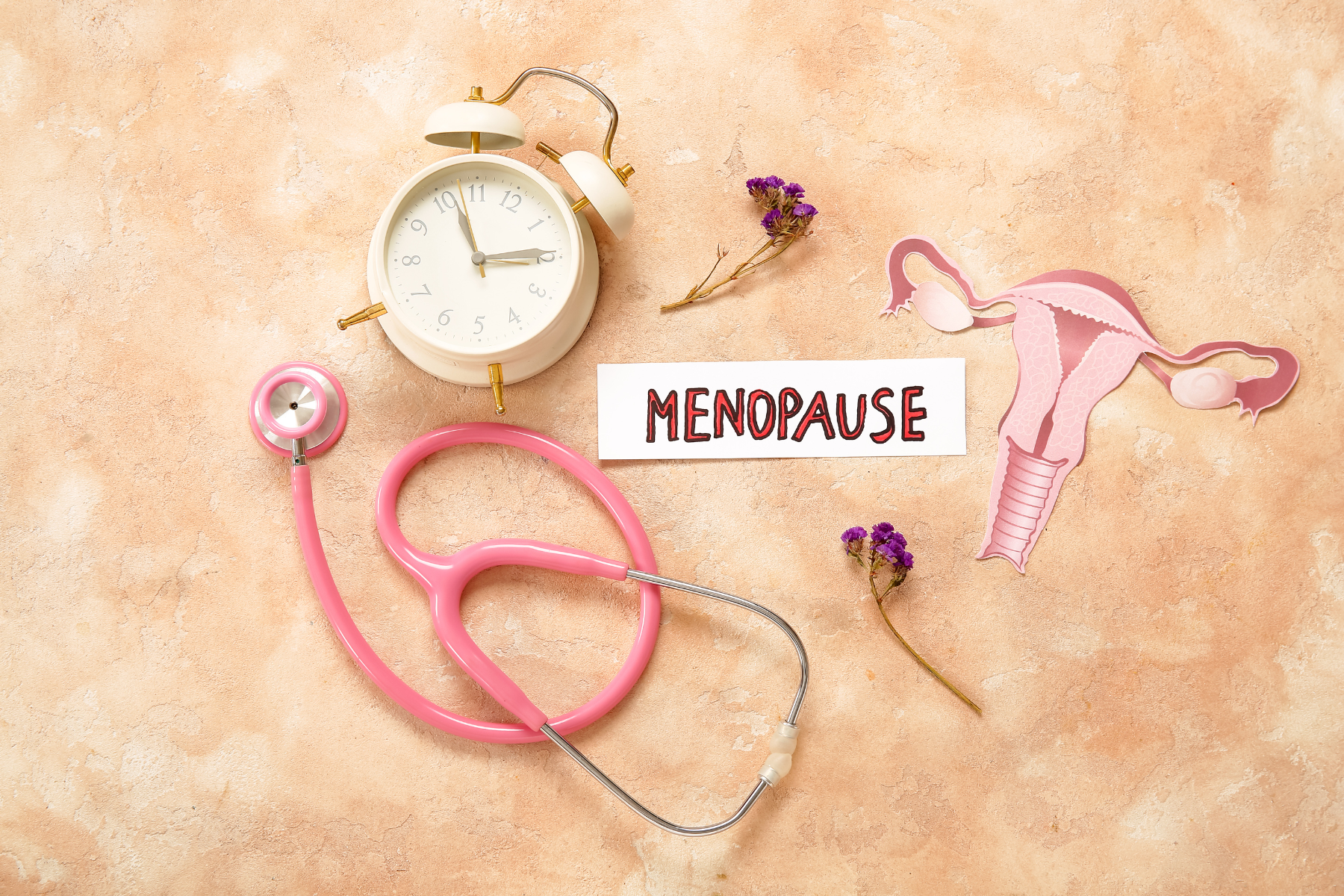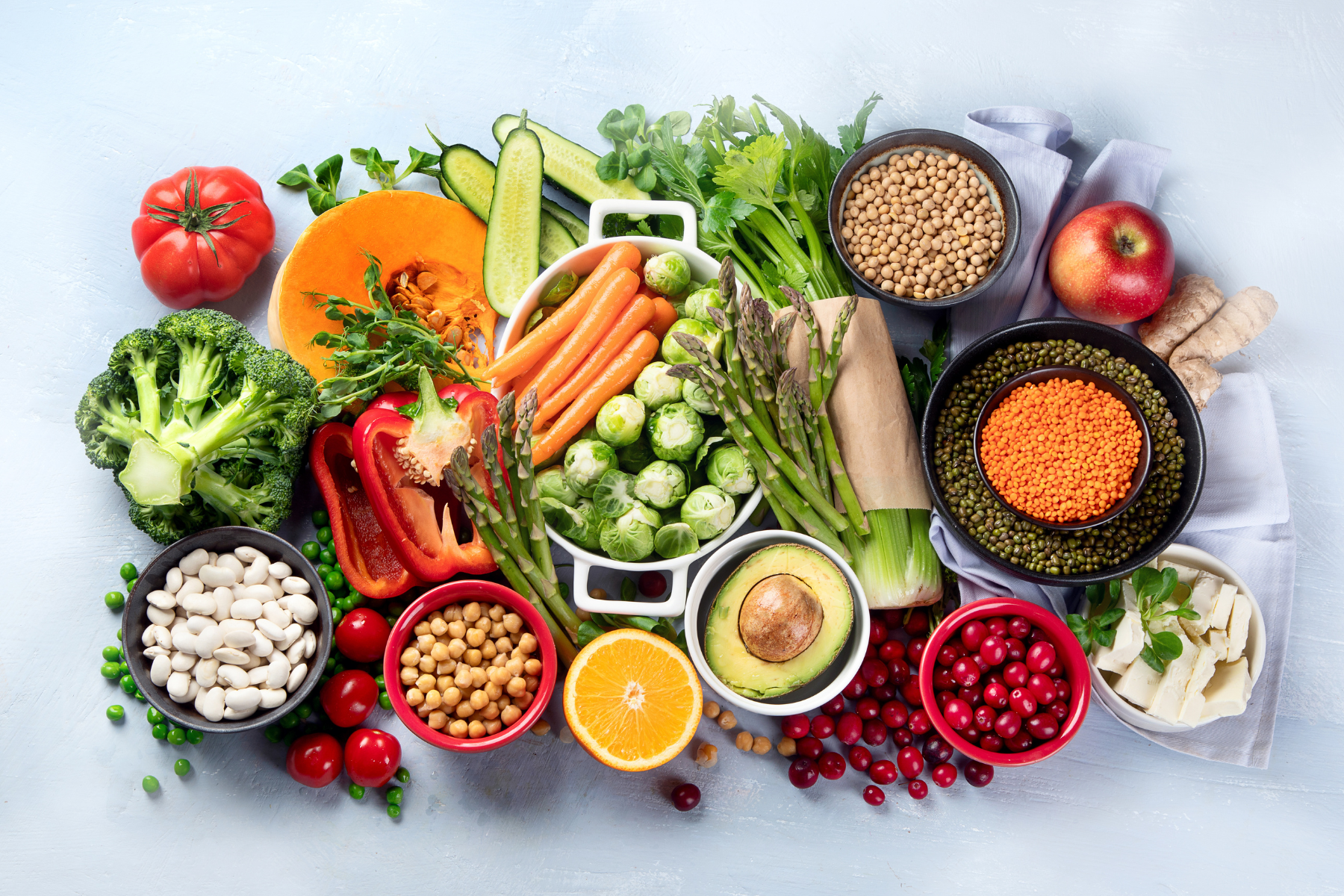
Understanding Menopause: A Nutritional Guide Through Each Stage
Menopause marks a profound transition in a woman's life, a journey that closes the chapter on reproductive years and ushers in a new era of personal growth and change. It's a natural biological process, yet it comes with a spectrum of physical and emotional shifts that can affect your daily life. Recognizing the pivotal role of diet during this time can be a game-changer, helping to ease the transition while bolstering your health and vitality. So, let's embark on a journey together, exploring a guide meticulously tailored to nurture you through each stage of menopause, making it not just manageable but empowering.
How Do I Know That I'm In Menopause?
Menopause isn't an overnight occurrence; it's more akin to a gradual dimming light, transitioning your body into a new chapter with grace. It officially commences once you've experienced a full year without a menstrual cycle. Yet, the journey is marked with distinct signs: hot flashes that can abruptly make you feel uncomfortably warm, night sweats that disrupt your sleep more than any physical activity, unpredictable mood swings, and fluctuations in sexual desire. Recognizing these signs early on can be your ally in navigating menopause more effectively through lifestyle tweaks and, importantly, dietary changes.

Signs You Are in Menopause
Menopause, a natural biological process rather than a condition to be treated, carries its own set of indicators signaling this new phase in your life. Here are some key signs to watch out for, each pointing towards the door to menopause:
1. Irregular Periods
The most evident sign of approaching menopause is a change in your menstrual cycle. Periods may become irregular - they can be longer, shorter, heavier, or lighter, varying each month before stopping altogether.
2. Hot Flashes and Night Sweats
Hot flashes are sudden feelings of warmth, usually most intense over the face, neck, and chest, which can leave you sweating and even chilled afterward. At night, these can turn into night sweats, severely disrupting sleep.
3. Sleep Problems
The onset of menopause can make it harder to fall asleep or stay asleep. Night sweats can interrupt sleep, and shifts in hormone levels can contribute to changes in your sleep pattern.
4. Mood Changes
Menopause can trigger mood swings, irritability, and even depression. The hormonal changes at play can impact your emotional state and are often compounded by sleep disturbances.
5. Vaginal and Bladder Problems
Decreasing estrogen levels can lead to thinning of the lining of the vagina, resulting in dryness, discomfort during sex, and increased risk of vaginal infections. It may also cause urinary urgency or incontinence.
6. Decreasing Fertility
As ovulation becomes unpredictable, fertility declines. While pregnancy is still possible during perimenopause, the chances decrease significantly as you approach menopause.
7. Changes in Sexual Function
Menopause can affect sexual arousal and desire. Vaginal dryness can make sex uncomfortable, and decreased hormone levels may impact libido.
8. Loss of Bone Density
With the decrease in estrogen, women are at a higher risk of osteoporosis due to loss of bone density. This increases the risk of fractures.
9. Changes in Cholesterol Levels
Menopause can lead to changes in your cholesterol levels, including an increase in bad cholesterol (LDL) and a decrease in good cholesterol (HDL), which contributes to an increased risk of heart disease.
Recognizing these signs not only helps in understanding that you’re entering menopause but also underscores the importance of adapting your lifestyle and diet to manage symptoms and maintain health. Addressing these signs with nutritional adjustments and lifestyle changes can significantly alleviate symptoms and enhance your quality of life during this transition.
Understanding the Stages of Menopause and Nutritional Guidance
Menopause signifies not just the end of menstrual cycles but the beginning of a new phase of freedom and self-discovery. This transition encompasses three distinct stages, each with its own experiences, symptoms, and nutritional requirements:
Stage 1: Perimenopause – The Prelude to Menopause
Often starting 8 to 10 years before menopause, perimenopause is characterized by the body gradually reducing its estrogen production. This phase typically begins in a woman's 40s and extends up to menopause, marking the end of egg release by the ovaries. In the latter stages, notably the final one to two years of perimenopause, the decrease in estrogen becomes more significant, leading to more noticeable menopause symptoms, such as cramping and fatigue. Despite these changes, menstrual cycles continue, though irregularly, with pregnancy still a possibility.
Nutritional Advice For Perimenopausal Women
Calcium (And Vitamin D)
Consuming a lot of calcium during perimenopause is crucial for several reasons, primarily due to the changes in hormone levels, particularly estrogen, which significantly impact bone health. Estrogen plays a vital role in maintaining bone density and because estrogen levels begin to fluctuate and overall decrease during perimenopause, the risk of bone density loss increases. Calcium is essential for maintaining bone strength and health, so increasing calcium intake during perimenopause can help counteract the effects of decreasing estrogen levels.
Sources of Calcium:
Calcium is essential for bone health and more, found in a variety of foods. Some of the richest sources include:
- Dairy Products (milk, yogurt, cheese)
- Leafy Green Vegetables (kale, collard greens, spinach)
- Fish with Edible Bones (sardines, canned salmon)
- Tofu and Tempeh (especially when made with calcium sulfate)
- Almonds and Almond Butter
It's important to note that while calcium is crucial, it should be balanced with other nutrients like magnesium and vitamin D, which help with calcium absorption and utilization in the body.
Sources of Vitamin D:
- Fatty Fish (salmon, mackerel, tuna, trout)
- Fish Liver Oils (cod liver oil)
- Fortified Foods (cow's milk, plant-based milks, some orange juices, yogurts, breakfast cereals)
- Egg Yolks (from chickens)
- Beef Liver
- Cheese (various types)
Phytoestrogens:
Incorporate soy products like tofu and edamame to help balance hormones. Phytoestrogens can bind to estrogen receptors in the body, potentially easing menopausal symptoms caused by decreasing estrogen levels, such as hot flashes, night sweats, and mood swings. Their estrogen-like activity can help mitigate these discomforts by providing a mild estrogenic effect.
Sources of Phytoestrogens:
Phytoestrogens are found in various foods, with some of the richest sources being:
- Soy products (tofu, tempeh, soy milk)
- Flaxseeds
- Sesame seeds
- Legumes (beans, lentils)
- Whole grains
Omega-3 Fatty Acids:
During perimenopause, consuming omega-3 fatty acids is beneficial for several reasons. These essential fats can help alleviate common menopausal symptoms like hot flashes and night sweats due to their anti-inflammatory properties. They also play a crucial role in mood regulation, potentially reducing the risk of depression linked to hormonal fluctuations. Omega-3s support cardiovascular health by lowering triglyceride levels and blood pressure, which is vital as estrogen's protective effect diminishes. Additionally, they may contribute to bone health by improving bone density and offer assistance in weight management by enhancing metabolism. Incorporating omega-3-rich foods into the diet during perimenopause can thus support overall health and ease the transition through this phase.
Sources of Omega-3s
To reap these benefits, include omega-3-rich foods in your diet, such as:
- Fatty fish (salmon, mackerel, sardines)
- Flaxseeds and flaxseed oil
- Chia seeds
- Walnuts
- Hemp seeds

Stage 2: Menopause – The End of Menstrual Cycles
Menopause is confirmed when you haven't had a menstrual period for 12 months. This stage is defined by the ovaries no longer releasing eggs and a significant reduction in estrogen production.
Nutritional Advice For Menopausal Women
Low Fat, High Fiber Foods:
During menopause, incorporating low-fat, high-fiber foods into your diet is crucial for managing weight, as these choices help control calorie intake and increase satiety. Such a diet supports cardiovascular health by improving cholesterol levels and reducing blood pressure, which is vital as the risk of heart disease rises post-menopause. High-fiber foods also enhance digestive health and aid in maintaining regular bowel movements, while helping to regulate blood sugar levels, thus lowering the risk of insulin resistance and type 2 diabetes. Additionally, a diet rich in fiber may assist in balancing hormones and alleviating some menopausal symptoms, making it an essential component of a healthy lifestyle during this transitional phase.
Examples of Low-Fat Foods:
- Lean Proteins: Chicken breast (without skin), turkey, and lean cuts of beef or pork. Plant-based proteins like lentils, beans, and tofu are also low in fat.
- Dairy Alternatives: Low-fat or fat-free milk, yogurt, and cheese made from cow's milk or plant-based alternatives like almond, soy, or oat milk.
- Seafood: Fish like salmon, trout, and herring are not only low in unhealthy fats but also rich in omega-3 fatty acids.
Examples of High-Fiber Foods
- Vegetables: Broccoli, carrots, Brussels sprouts, and leafy greens like spinach and kale.
- Fruits: Berries, apples, pears, oranges, and bananas are all high in fiber. The skin of these fruits contains a significant amount of fiber, so it's beneficial to consume the skin when possible.
- Whole Grains: Quinoa, barley, brown rice, whole wheat pasta, and oats. Whole grain breads and cereals are also good sources.
- Legumes: Beans (black, lima, kidney), lentils, chickpeas, and peas.
- Nuts and Seeds: Almonds, flaxseeds, chia seeds, and pumpkin seeds.
Incorporating a variety of these low-fat, high-fiber foods into your diet can help manage menopause symptoms and promote overall health. Remember, it's not just about single food items but how they fit into your overall diet and lifestyle. Enjoying a balanced diet rich in fruits, vegetables, whole grains, and lean proteins can provide the nutrients your body needs during menopause. We have created a comprehensive menopause food guide that includes recipes and meal ideas, which you can find here.
Stage 3: Postmenopause – Life After Menopause
This stage encompasses the years following menopause, focusing on managing symptoms and preventing health risks associated with decreased estrogen levels.
Nutritional Advice For Postmenopausal Women
Adopt a heart-healthy diet rich in unsaturated fats from sources like avocado and olive oil, and ensure a consistent intake of protein to combat muscle loss. Prioritizing whole foods over processed helps manage weight and supports overall health. Continue focusing on calcium, vitamin D, and magnesium to support bone health.
Calcium
Calcium's importance remains consistently high from menopause into the postmenopausal years, playing a critical role in mitigating the accelerated bone density loss associated with the decrease in estrogen levels. As women transition through menopause and beyond, the risk of osteoporosis and bone fractures significantly increases due to the rapid decline in bone mass. Adequate calcium intake is vital for maintaining bone strength and density, helping to prevent osteoporosis and reduce the risk of fractures.
Though we’ve already covered the most common sources of calcium above, here are additional sources of calcium that can complement the primary ones mentioned, especially beneficial for those with dietary restrictions or preferences.
Additional Sources Of Calcium
- Broccoli and Broccoli Rabe
- Figs (especially dried figs, which contain more calcium than fresh)
- Oranges and Orange Juice (particularly calcium-fortified varieties)
- Sesame Seeds and Tahini (sesame seed paste)
- Blackstrap Molasses (a good source of calcium and can be used as a sweetener)
- Seaweed (certain types, such as kelp and wakame, are high in calcium)
- Okra
- White Beans and Navy Beans
- Chia Seeds
Lean Protein:
Lean protein is vital for post-menopausal women due to its role in maintaining muscle mass, supporting weight management, and enhancing bone health. As women age, especially after menopause, they experience a natural decline in muscle mass and metabolic rate, making it easier to gain weight. Lean protein helps combat this by increasing satiety and preserving muscle mass, which in turn aids in maintaining a healthy metabolism. Furthermore, protein intake is crucial for bone strength, reducing the risk of osteoporosis and fractures common in post-menopausal women.
Sources of Lean Protein
- Poultry (chicken and turkey breast)
- Fish and Seafood (salmon, tuna, shrimp)
- Plant-based Proteins (tofu, tempeh, legumes)
- Lean Cuts of Beef and Pork (tenderloin, sirloin)
- Eggs and Dairy Products (low-fat yogurt, milk, cheese)
Omega 3 Fatty Acids
For post-menopausal women, consuming omega-3 fatty acids remains as important as during menopause due to their wide-ranging health benefits, which align closely with the challenges and changes that arise in this life stage. Omega-3s play a crucial role in cardiovascular health by reducing inflammation, lowering triglyceride levels, and potentially decreasing the risk of heart disease, which becomes a heightened concern post-menopause due to changes in hormone levels. These essential fats also support mental well-being, helping to manage mood fluctuations and protect against cognitive decline, concerns that may persist or emerge after menopause.
In addition to the excellent sources of omega-3s mentioned previously, there are several other foods rich in these essential fatty acids that can diversify your intake:
Additional Sources Of Omega 3s
- Soybeans and Soybean Oil
- Pumpkin Seeds
- Eggs
- Grass-fed Beef and Dairy Products

Prioritizing A Balanced Diet
While focusing on specific nutrients like calcium, omega-3 fatty acids, and phytoestrogens is important during the stages of menopause, the overarching principle of following a balanced and healthy diet cannot be overstated. A balanced diet ensures that you're not only targeting the key concerns of menopause, such as bone density loss or cardiovascular health, but also addressing overall nutritional needs. This holistic approach supports your body’s complex system, providing a broad spectrum of vitamins, minerals, and other nutrients essential for optimal health. It aids in maintaining energy levels, supporting emotional well-being, and managing weight.
Moreover, a balanced diet can enhance the effectiveness of the nutrients highlighted for menopause, creating a synergistic effect that promotes resilience against menopause-related changes. Incorporating a variety of fruits, vegetables, lean proteins, whole grains, and healthy fats ensures comprehensive nutritional coverage, making it a cornerstone of managing menopause with vitality and well-being.
Lifestyle Tips for All Stages of Menopause
In addition to dietary adjustments, lifestyle changes can significantly improve quality of life during menopause:
Regular Exercise: A mix of cardio, strength training, and flexibility exercises can help manage weight, improve mood, and maintain bone density.
Stress Management: Techniques like yoga, meditation, and deep breathing.
Quality Sleep: Establishing a regular sleep schedule and creating a restful environment.
Wrapping Up
As we navigate the varied landscapes of menopause, from the initial signs to the postmenopausal horizon, it's clear that our dietary choices and lifestyle practices play pivotal roles in shaping our experience. Embracing a balanced diet rich in essential nutrients, staying hydrated, engaging in regular physical activity, and managing stress are not just strategies for mitigating menopause symptoms—they are acts of self-care that honor our body's evolving needs. Remember, menopause is not just a series of stages to endure but a transition to approach with knowledge, support, and a sense of empowerment. By adapting our lifestyle to our body’s changing needs, we can navigate this natural phase of life with grace and vitality. Always consult with healthcare professionals to tailor these recommendations to your personal health profile. Here's to embarking on this journey with confidence, armed with the knowledge and practices that support our well-being at every stage.
Unlock Exclusive Deals!
Be the first to know about our special promotions, new arrivals, and more when you sign up for our newsletter.
Related Posts

Chaharshanbe Suri: A Fiery Persian Celebration of Joy, Food & Tradition

The Flax Seed Face Mask That Lifts, Firms, and Restores Your Glow—Naturally!




